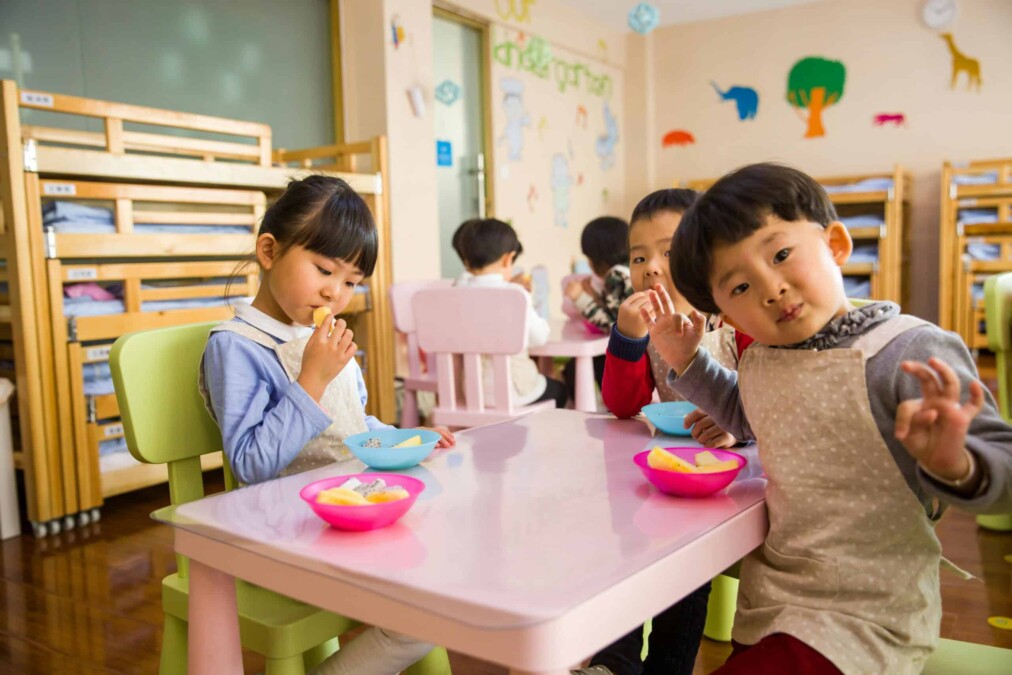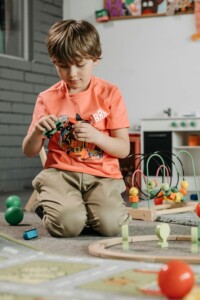Researchers and clinicians are understanding why kids struggle with behaviour and what practitioners can do to support families.
It’s challenging when kids’ behaviour becomes difficult or aggressive. Especially when they are harming others or themselves, and the adults around them are starting to feel afraid or scared that they no longer know how to manage their child’s behaviour. In the last decade, neuroscience developments have helped us form a new paradigm of understanding why kids get stuck reacting aggressively or become stuck in negative behaviours. These new understandings have shed some light on new ways to support children as well, but it means letting go of some of our long-standing approaches to children.
Approaches to Understanding Childhood Behavioral Concerns
Whilst parents and practitioners alike know that using punishments and rewards can influence children’s behaviour, these approaches haven’t served us in developing an understanding of where these behaviours are coming from, and in targeting the underlying causes of the misbehaviour. Using punishments and not adjusting demands and stressors felt by the child, may increase the child’s sense of threat and stress and result in escalated behavioural responses. We think that as parents, clinicians and educators, we too often get caught in a cycle of punishment, mistrust (for both child and adult) increased activation and stress (for both child and adult), and increased poor behaviour and resultant punitive measures. It sometimes may appear to be a self-perpetuating cycle that many children with behavioural difficulties get caught in, even with the most caring and supportive adults around them.
An alternative approach is to understand children’s behaviour (and adult behaviour) through the lens of stress responses and recovery from stress. Emerging studies in neuroscience shows us that healthy relationships help us manage stress throughout our lives. When a child feels safe and connected to the adults in their life, the child is likely to be in their “ventral vagal” (safe-calm) zone and is connected, calm, and able to engage. When children feel safe in relationships with adults, stress responses are reduced, and children learn ways to reduce stress on their own as they mature. On the other hand, when children respond to stress their prefrontal cortex (their “thinking brain”) moves offline, and the primitive acting/emotional brain is in charge- this means the child will be unable to think, will likely be highly emotive, and would have trouble understanding or explaining why they responded a certain way at that moment.
How the Experience of Stress Drives Childhood Behavioural Concerns.
We may be underestimating the stress that children experience. Children who are neurodivergent, who are more vulnerable to stress (that is, children with ADHD, autism, specific learning disorder, etc) (Lackschewitz, Hüther, & Kröner-Herwig, B., 2008). Further to this, the recent child maltreatment study indicated that 40.2% in a sample of 3500 Australian adults had experienced some form of maltreatment (either neglected, or experienced sexual, physical, or emotional abuse, or were exposed to domestic violence). A study by Ciccheti & Rogosh, (2001) found that in a sample of 175 maltreated school children, they had substantially elevated cortisol levels in the morning and afternoon after school.
“School Cant Australia” recently looked at school-based stressors in a neurodiverse population and found that things like social connection, the structure of the school day, and the design of schools can all impact on a child’s experience of school. In that study, most individuals identified up to 57 stressors that contribute to their child’s experience at school, which shows that one stressor is unlikely to tip a child into overwhelm. Other school stressors for any child may include the differing ability of staff to detect that a child is becoming distressed, the child’s difficulty communicating their distress, schoolwork not being of interest to the child, placing responsibility on the student to change behaviour, and the length of the school day. This is critical to note. The build-up of stress, overwhelm, and burnout for a child can be cumulative. This is key, as our traditional behavioural tracking systems such as the ABC approach (observing the Antecedent, Behaviour, Contingency) approach to considering a behaviour are likely to miss the cumulative impact of this nervous system activation from a build-up of several triggers over time.
Often it might appear as if a child quickly escalated over something minor, and whilst observing the child, it may appear as if there is a specific trigger. Instead, there are potentially dozens of small stressors that have built up for a child over time. We are also becoming more aware of masking behaviours at school, where kids hide or mask their difficulties as much as they can during the school day, and release the stress when they are back in the care of their primary caregiver.
Early Warning Signs of Childhood Behavioural Concerns
Signs that a child may be stressed include displaying “fight responses” (aggression, irritability, hitting others, spitting, kicking) “Flight responses” (withdrawing, hiding, running) or freeze responses (being overly rigid and controlling, refusing to comply with simple requests, difficulties transitioning, melting down, shutting down).
- The child seems to get stressed frequently, quickly, and react intensely.
- Does the stress response happen too frequently during the day? Does the stress response happen immediately when a person is presented with a stressor? Sometimes we use the phrase, ‘0 to 100’ to describe this escalation in intensity. In a healthy mature nervous system, there are smooth, more gradual shifts between stress responses and intensity that match the context, or level of threat or challenge.
- Too Long to Recover: Does the stress response last a long time even after the challenge or threat has been removed? For example, a person is still irritable, despite a conflict being resolved, or is still anxious even though a test is over.
- Does Not Adjust to Transitions.
- Poor Recovery to Green Zone: The child appears unable to adequately recover back to the green zone and is chronically in a stress response.
We can support the child when they are activated by being their ‘safe nervous system’ – being flexible to finding solutions, having a safe connection, or a safe place for the child to go, and having warm regard for the child and responding to their nervous system with time and patience because their nervous system won’t readily forget what their brain perceives as a threat.
We also know that for neurodivergent children, what they find calming often include
- Time and space to focus on their special interests
- Sensory toys or tools
- Novel and interesting activities
- “Safe” spaces
- Screens can be experienced as calming
- Contact with a trusted adult.
References
• CICCHETTI, D., & ROGOSCH, F. (2001). Diverse patterns of neuroendocrine activity in maltreated children. Development and Psychopathology, 13(3), 677-693. doi:10.1017/S0954579401003145
• Lackschewitz, H., Hüther, G., & Kröner-Herwig, B. (2008). Physiological and psychological stress responses in adults with attention-deficit/hyperactivity disorder (ADHD). Psychoneuroendocrinology, 33(5), 612–624. https://doi.org/10.1016/j.psyneuen.2008.01.016
• https://www.acms.au/findings/\
• https://www.theguardian.com/australia-news/2023/aug/10/senate-report-on-school-refusal-recommends-subsidised-mental-health-care-for-students











